Healthy Aging Physical Therapy Blog Summaries
2025
Many older adults don’t fit neatly into a single diagnosis—and neither does their care. In Cutting Through the Chaos: Creating Effective Frameworks for Working with Complex Patients, Dr. Katie Wadland, PT, DPT, Board-Certified Geriatric Clinical Specialist, shares how Healthy Aging Physical Therapy helps clinicians and families navigate the challenges of treating medically complex patients. Learn how to identify priorities, layer support, and build collaborative care plans that promote safety, independence, and resilience for older adults with multiple conditions.
Learn the top 5 reasons older adults are referred for outpatient physical and occupational therapy at home — including fall risk, Parkinson’s care, post-hospital recovery, and more. Discover how at-home PT and OT from Healthy Aging Physical Therapy can help you stay safe, strong, and independent.
Discover how Motus Nova’s robotic and AI-powered therapy devices can help improve hand and foot mobility from the comfort of home. Learn how Healthy Aging Physical Therapy patients can access this Medicare-covered tool through in-home demos and personalized therapist support.
Fall Prevention Tips for Older Adults | Healthy Aging Physical Therapy
Discover evidence-based fall prevention strategies using the CDC STEADI framework, including strength and balance training, vestibular therapy, home safety modifications, and fall preparedness education. Learn how Healthy Aging PT helps older adults reduce fall risk and stay independent through 1:1 therapy, personal training, and group classes like Strong and STEADI and Fit & Fearless.
Join our Fit & Fearless class and learn essential fall prevention and fall recovery techniques designed for older adults. This transformative program combines strength training, adaptive martial arts, and safe fall landing strategies to help you build confidence, reduce injury risk, and move fearlessly. New session starts this September—discover how to fall smarter and rise stronger.
June is Alzheimer’s and Brain Awareness Month—a perfect time to explore how regular movement can improve quality of life for individuals living with dementia. In this post, Dr. Katie Wadland, PT, DPT, Board-Certified Geriatric Clinical Specialist, explains why people with dementia face faster physical decline, higher fall risk, and reduced motivation to stay active—and what caregivers can do about it. Learn evidence-based strategies to build safe, meaningful, and consistent activity into daily routines, plus how expert therapy support can make all the difference.
Discover how soft skills like empathy, listening, and curiosity drive better outcomes in physical therapy. At Healthy Aging Physical Therapy, we’ve built a model that puts people first—prioritizing meaningful connection, patient-centered care, and compassionate practices that go beyond checkboxes. Learn how we structure our visits, train our team, and lead with heart to truly make a difference for older adults and individuals with complex needs.
Feeling dizzy? You’re not alone—and you don’t have to live with it. Learn how at-home vestibular therapy can help treat vertigo, prevent falls, and restore your confidence. Backed by research and delivered by certified experts, Healthy Aging Physical Therapy brings dizziness relief to your doorstep.
Friendship isn’t just good for the soul — it’s essential for healthy aging. Discover the surprising science behind socialization, its impact on your brain, body, and heart, and why nurturing connection is one of the most powerful ways to thrive at any age.
"At Healthy Aging Physical Therapy, we don’t just work alongside each other—we work with each other. From co-treating and skill-sharing to supporting one another through challenges, our culture is built on trust, collaboration, and a deep commitment to our patients. Because behind every 1:1 patient session, there’s an entire team working together to make it a success. And that’s what makes all the difference."
Feeling stuck in your health, habits, or life? It’s time to PIVOT! Inspired by the iconic Friends scene, this post explores how small, intentional shifts can create lasting change—whether in fitness, nutrition, mindset, or therapy. Learn how modern physical and occupational therapy has evolved from passive treatments to patient-driven care, backed by science like the OPTIMAL Theory. At Healthy Aging Physical Therapy, we help patients make meaningful changes by setting personalized goals, overcoming barriers, and embracing movement as medicine. You don’t have to climb the whole staircase - just take the next step.
Discover the options, coverage, and process involved in selecting the right wheelchair. From custom manual and power wheelchairs to scooters, learn how a well-matched chair can improve mobility, independence, and quality of life. Healthy Aging Physical Therapy offers in-home assessments to ensure your wheelchair fits your unique needs and living environment. Contact us today to start your journey to enhanced mobility!
Looking for a rewarding career in healthcare? Healthy Aging Physical Therapy is hiring Physical Therapists, Occupational Therapists, Personal Trainers, and Massage Therapists in the Medford/Melrose/Stoneham area. We offer a sustainable, therapist-first environment with flexible scheduling, streamlined documentation, profit-sharing, and collaborative team culture. Join us to thrive in your career and make a real impact on patients’ lives! Apply now to be part of our innovative and supportive practice."
2024
"Discover five powerful lessons from Katie Wadland’s experience in the Goldman Sachs 10,000 Small Businesses program. From financial confidence to leadership growth, learn how this tuition-free, application-based program helped her transform Healthy Aging Physical Therapy into a thriving business. Explore key insights on entrepreneurship, mentorship, and navigating healthcare challenges. Read more and get inspired for your own business journey!"
Boost Your Brain Health with These 6 Proven Steps
Discover how to maintain cognitive fitness and build your brain’s resilience with actionable steps backed by science. Learn how exercise, nutrition, quality sleep, stress management, social connections, and lifelong learning can enhance cognitive reserve and support healthy aging. Start your journey to better brain health today with these expert tips and the Wellness365 program.
"Discover how simple, consistent actions like deep breathing, walking outdoors, or practicing yoga can transform your well-being. Start small, build one habit at a time, and watch your nervous system thrive. Learn more about creating space in your cup for life's challenges."
As a geriatric physical therapist, I’ve come to view death not as something to fear, but as a natural part of life. Through meaningful relationships with patients, I’ve learned that life is precious, and our quality of life can change in an instant. This post reflects on how healthcare providers like myself navigate loss, while embracing the importance of kindness, compassion, and living each day with gratitude.
Falls are a common and serious concern for older adults, often leading to fear, reduced physical activity, and a cycle of increased fall risk. At Healthy Aging Physical Therapy, we break this cycle through personalized fall risk assessments, evidence-based interventions like the Otago Balance Program, and home safety evaluations. Our comprehensive approach helps rebuild strength, improve balance, and restore confidence, allowing older adults to maintain independence and reduce the risk of future falls.
Call us at (617) 398-4508 or visit Healthy Aging PT for more information!
Finding time for exercise can be challenging, but adapting the World Health Organization (WHO) and Centers for Disease Control and Prevention (CDC) guidelines to fit your lifestyle is key. This guide breaks down how to achieve 150 minutes of aerobic activity and 2-3 days of strength training per week, tailored for various fitness levels. Learn how to integrate balance and flexibility exercises into your routine and discover practical tips for staying active, whether you're just starting out or looking to enhance your current routine. Check out the Move Your Way Activity Planner for a personalized approach, and explore resources like our Club HAPT for strength training and PWR! Moves for Parkinson’s. Start fitting exercise into your week today and enjoy the many benefits of staying active!
In this blog post, we explore the challenges facing Medicare and health insurance reimbursements, particularly in physical therapy and private practices. We delve into how reimbursement rates have steadily decreased over the past 20 years, highlighting key legislative impacts like the Balanced Budget Act of 1997. We explain the importance of offering cash-based services, such as Fitness and Wellness programs, to maintain financial stability and continue providing high-quality care. Learn more about how these services benefit both the practice and patients by allowing for flexibility and long-term health support. Discover why supporting local healthcare providers and understanding the intricacies of Medicare and insurance are crucial in today’s healthcare landscape.
You’ve done it! You started your exercise routine and you’re sticking with it (well, most of the time.) But are you getting the most out of yourself and the full impact that exercise can achieve? In this post, we’ll discuss exercise intensity, and if it’s safe when considering exercise in older adults.
Discover effective strategies to reduce back pain and enhance your quality of life. Learn about common causes such as osteoarthritis and osteoporosis, and find out how aerobic exercise, strength training, and stretching can help alleviate discomfort. Get tips on safe exercise practices, diet, and sleep positions to support a healthy back. Enjoy your favorite activities pain-free with these expert-backed solutions.
Discover effective strategies to reduce back pain and enhance your quality of life. Learn about common causes such as osteoarthritis and osteoporosis, and find out how aerobic exercise, strength training, and stretching can help alleviate discomfort. Get tips on safe exercise practices, diet, and sleep positions to support a healthy back. Enjoy your favorite activities pain-free with these expert-backed solutions.
While it may be ‘hot girl summer’ everywhere else you look, here over at Healthy Aging, we’re entering ‘hot patient summer’ season. Last week, as temperatures climbed, I challenged my Parkinson’s class to a drinking contest - except instead of chugging beers, we tried to finish a bottle of water between exercises. While for most people, summer heat brings thoughts of bathing suits, pool parties and barbeques, for me, and most of my home health colleagues, we go to thoughts of dehydration, low blood pressures and passing out. So, as the summer heat approaches, I want to talk to you today about staying hydrated. Hydration over the summer is crucial for everyone, but especially older adults. Dehydration can lead to serious health complications, but with a few simple strategies, it’s easy to stay hydrated and healthy throughout the season.
Discover the powerful link between exercise and mental health in older adults. Learn how staying active can combat depression and improve overall well-being. Explore effective strategies to incorporate exercise into daily routines for a happier, healthier life.
2023
On August 29th, 2023, my mom developed Covid, had a seizure, and became unresponsive for twenty five minutes. For ten of those, I held her, alone, waiting for the EMTs, and thought she was brain-dead or dying. At one point, she turned blue and I gave her mouth to mouth. I still don’t have the right words to describe quite what it was like, but I can tell you those ten minutes were long enough to go from confusion, to panic, to action, to acceptance. Once the seizure stopped, I just held her and tried to breathe and kept asking her to do the same, telling her over and over ‘you’re okay, mom, I’ve got you, you’re okay, keep breathing.’ I should mention that my mom has had Parkinson’s disease for 20 years, so while considering the inevitability of her mortality is nothing new or shocking to me, I definitely didn’t think it was going to be like this.
Ever wonder how to RETRAIN the BRAIN? Read on learn all about the wonderful world of NEUROPLASTICITY….
2022
Two recent studies came out that I think every Adult over 50 should know about. Read on for a brief review of these two journal articles + 5 simple strategies to improve your daily physical activity level to REDUCE your chance of death and disability from Covid-19.
Believe it or not, I hate discharging patients. It’s always a hard conversation. I become attached. They become attached. Most people feel BETTER after their therapy visits and who would want to stop that? But the truth is, we can’t see you forever (except sometimes, but that’s a story for a different blog post). So, I penned this Dear John letter to put all my feelings into words and let you know what is actually going through our heads when we come to the hard decision that it is time to discharge you from your physical therapy care.
As a ‘Medicare B’ therapy practice, we hear all sorts of crazy myths and misconceptions that often keep people from getting the care they need. Read on to hear about the top 5 Medicare Myths and learn how you can make the most of your Medicare B Therapy Benefit.
Healthy Aging Physical Therapy strives to give people living with Parkinson’s the support they need to better manage their symptoms - at all stages of the disease.
Healthy Aging Physical Therapy strives to give people living with Parkinson’s the support they need to better manage their symptoms - at all stages of the disease.
Lessons learned from Bob Saget and why it’s SO important to tell your doctor when you fall!
2021
If there is one thing we can’t avoid, it’s aging. Every day, every minute, every second…you, me and everyone around us is getting older. Whether you’re 30, 50 or 85, the decisions we make every day contribute to the trajectory of our aging process. While we’re all guilty of trying to find the easy answer, the bad news is that Healthy Aging is a lifestyle, not a magic pill. The good news is that solution is actually pretty simple, and truth be told, you probably already know the answer. And if you don’t…don’t worry, I got you covered:)
Summer came in with a bang this year - a hot bang - and Boston made records for the warmest June on record.
And while summer comes with it’s shares of highs, it also comes with it’s share of lows - Low Blood Pressure, that is!
Here are a couple tips for keeping your blood pressure regulated in the heat:
People often think of physical therapists as the go-to people to treat musculoskeletal pain, but physical therapy has much to offer beyond pain management, especially when it comes to the older adult. Read on for 5 Ways Physical Therapy and Exercise can help you live your best life as you age.
😳Did you know that simply being the SPEED that you walk can predict whether you still stay ACTIVE and INDEPENDENT - or whether you will be at increased risk for FRAILTY and FALLS? In fact, walking speed has been referred to as the ‘6th vital sign’ because it so highly correlated with over function. 🚶♀️🚶♀️🚶♀️
Sometimes the best advice comes from the least expected places. This week, I bring you wise words from my seven year old, as she taught me how to ‘relax’ by dancing on our back deck:
“Let me show you how to be a kid. You just do the things your body tells you to do - the fun things!”
Healthy kids don’t have to set aside time to exercise, because exercise is simply part of their everyday life. They move constantly. They fidget, they chase their friends, they play sports and take gymnastics classes and dance.
As adults, sometimes, we too often stop doing all the ‘fun things’ our body tells us to do. We replace the fun things with work, and stress, and sitting and to-do lists. We have to schedule exercise in, just to get it done.
But what if we started looking at exercise like a kid again?
FAQ: Should I use a Cane or a Walker?
The answer is...it depends! (This is every physical therapist's favorite answer, by the way...)
As a Geriatric Physical Therapist, I spend oodles of time talking about assistive devices. Whether it’s working to wean off of one, or educating my patient on the importance of using one, my day-to-day includes much talk of canes, walkers, wheelchairs and the like. But like most things in PT-world, the who-gets-what assistive device conversation is never black and white, but here are a few things I think about when deciding which assistive device to recommend.
During a library talk last week, I spoke on the topic of Health Literacy. The day I was scheduled to present, I found myself dealing with a real-life example with a patient of why having a good grasp on health literacy is so critical to healthy aging. During our visit, I realized my patient had been taking double the dose of her prescribed medication - not out of any error on her part, but because she had two prescriptions on file for the same medication, one for the generic version, and one for the brand name - and she was unaware they were the same drug. How does this happen? How does it get by so many layers of well-meaning and conscientious health care professionals and hospital settings? Unfortunately, this stuff happens, and happens all too often, because there are a lot of ‘cooks in the kitchen’ and because all of us ‘cooks’ are human and we make mistakes. But this, this is why it is so imperative for you as the consumer, as the patient, to have an adequate level of health literacy - so you can be your own advocate, so you can be on the lookout for these human errors and so you can play an active, instead of passive, role in your own health maintenance.
As you know, I love to counter a question with another question, or in this case, three:
1 ) Have you fallen in the past year?
2) Do you feel unsteady with standing or walking?
3) Do you worry about falling?
If the answer to any of these is yes, research has shown that you are likely at an increased risk for falling. Now while this may seem like a short and sweet, the actual answer is a bit longer and more involved. This is where I come in. When I check to see if a patient of mine is at increased risk of falls, I’m like a detective on a trail. While I may start with these questions, their answers lead me down windy trails where I pick up clues that not only determine IF you are at fall risk, but more importantly, WHY. And it’s the WHY that allows me to help you prevent them. But that’s a story for a different post.
I’ve gone back and forth what to post all day. Do I do the thing ‘I’m supposed to do’ and post a nice ‘Happy New Year you graphic? Do I write about how guilty I feel thinking about expressing gratitude to have made it through this year relatively scratch-free, when I’ve seen so many friends struggle with loss this year? Do I sit back and make Big Goals and Resolutions then share them with the world? (The possibilities are endless..)
2020
Guys I have a confession to make…
I haven’t been to the dentist in over a year. Between Covid-related closures and life, it just didn’t happen. But I went this morning, and am so glad I did. And it got me thinking about a few things.
FAQ: What do you actually do?
(Aka when your PT doesn’t ‘look’ like a normal PT..)
I get it - Physical Therapists who don’t always look and act like ‘normal’ physical therapists can throw you for a loop. Us Geriatric Mobile PT’s don’t have a clinic. We don’t work with aides. Heck, we don’t even own an ultrasound or estim unit (usually!). So what is that we actually do?
FAQ: How ‘Old’ Do I Have To Be to See You
(Hint: It’s a trick question)
I’ll answer this question with another question. Are you older than you were yesterday? Then you’re ‘old enough’ to see me.
As a Physical Therapist, I don’t actually ‘treat’ Dementia. But, I do treat an a whole lot of people with dementia. Why do people with dementia end up on my caseload? Frequently, people with dementia fall and have fall-related injuries that require physical therapy. People with dementia are also at increased risk for social isolation, malnutrition, inactivity and inevitably, functional decline. And more than anything, because I treat older adults as a specialty, dementia is simply one of the more common diagnoses I find on that long list of age-associated diseases that follows the prompt for past medical history.
Diabetes is the 7th leading cause of death in the United States, and the numbers of people living with Diabetes are increasing. Since I’ve been alive (I’m under 40, but over 35 for those of you wondering..), the number of cases of diabetes have QUADRUPLED. Trends project that by 2050, 1 out of ever 3 American adults will have Diabetes.
Part III, and my favorite part to write, reviews the concrete steps we can take to prevent pulmonary disease and slow age-related changes to the lungs.
Part II in the HAE Pulmonary series looks at how our lungs change with age, and reviews some of the common pathologies experienced that can affect lung health.
I attended a webinar last night the speaker asked us to identify our core values. What I found particularly interesting, is she specified that our core values should be both relevant to our personal lives and our business practices, because contrary to popular belief that you should keep your professional and personal life separate, a business can be most successful and fulfilling when these values align. As an independent practitioner, I found this concept resonated with me longer, as one of the things I value most so far about running my own practice is that I get to do things MY way. While I started HAE/PT simply as a way to be able to continue to work while meeting the unusual demands I now face at home due to the pandemic, it has transformed into something else entirely. It has given me an opportunity to to use my skills and experience in the best way I know how to help my patients in more meaningful ways. In thinking about it in this light, of course my personal core values should line up with my professional ones, and I can see how making these a regular part of the way I do my business will be the best path to success.
Anyone out there feeling extra stressed lately? No? Just me? Great…
In reality, I think I’d be hard pressed to find someone who hasn’t been unusually stressed out this year. 2020 has been a veritable buffet of stressors - there’s been something for absolutely everybody. Job insecurity? Check. Overworked and underprotected? Check. Fear for your children? Check. Fear for your aging parents? Check. Fear of death or disability from a mysterious illness no one fully understands that is spreading like wildfire through the world? CHECK! Loneliness, isolation or stuck in the house with your entire family for months on end? Check, check and check. For even the most stoic of individuals, 2020 has shaken us to our core, and more than likely, given each of us more than our fair share of things to worry about.
Confused about your Medicare benefits? You’re not alone. But breathe easy and read on as I clear up the Continuum Confusion and help you understand the When, Why and Wheres of Med A and B coverage and how HAE/PT can better help you manage your health, wellness and rehabilitation.
I’m not a fan of yardwork. I won’t go so far as to say I hate it, but I don’t get any joy from it. I don’t love the dirt, I’m not a huge fan of the bugs and every time I’ve ever put effort into creating a garden, it has become absolutely decimated by hungry rodents in less time than it took to plant the stupid thing. But lo and behold, last week, I found myself begrudgingly taking part in family yard clean up day. And by ‘family’, I mean me and my husband weeding and raking and mowing and scooping and wheel-barrowing for 6 hours straight after my kids pulled weeds for 10 minutes declared it was too hot and went inside for popsicles. But I digress.
So I’ve been researching the benefits of physical activity on healthy aging a lot lately. Of course, as a PT, I’m well-aware that exercise is good and we should all be doing it, but I’ve been doing a deeper dig lately into the actual specific effects on our health as I develop my therapy programs. Beyond identifying the benefits, the next step is learning how acheive them. This has led me to topic of intensity. Yes, for those of you who know me, you can stop your snickering, I’m aware I can be a *little* intense sometimes and you may find the idea of me actually having to put research into this topic a little amusing. But in reality, the topic of intensity is actually quite pertinent to healthy aging. You see, the older adult is chronically underdosed in exercise intensity by well-meaning therapy clinicians and the medical profession in general when it comes to exercise prescription. Underdosing translates into wasted efforts, and poorer health outcomes. I want better for my patients.
Osteoporosis is a disorder of progressive bone loss. While all bones normally cycle through a series of bone degradation (resorption) and new bone creation (deposition), bone loss occurs when the rate of bone resorption becomes faster than the rate of bone deposition. While we all experience age-related bone loss beginning around age 35, bone tissue deterioration can become pathological when it progresses < 1 ‘standard deviation’ (SD) from normal. Osteopenia is defined as between 1-1.25 SD below normal or a T score (measure of bone density) between -1 to 1.25. Osteoporosis is defined when bone density drops 2.5 SD or more below normal, or T score falls below - 2.5. Symptoms of low bone density typically include increased risk of fracture, increased thoracic kyphosis and pain. Osteoporosis can impact breathing and digestion if/when structural changes affect posture and spinal structure. Women are at higher risk for bone loss than men; women are 8x more likely to experience Type I osteoporosis(postmenopausal and related to loss of estrogen), and 2x more likely to experience type II (senile osteoporosis that occurs after 70 years old).
With my goal of promotion of healthy aging for the patients I treat, I also think it's important to share information on a larger scale. Each Tuesday, I will review either new literature or established best-practice standards that address the best treatment for a particular disease, disorder or dysfunction. To kick things off, I choose a problem I'd be willing to bet we've all experienced a time or two....Low Back Pain.
I had the opportunity to sit in on a Michael J Fox Foundation research update this week, presented by Rachel Bulmer and Melanie Demakis, and wanted to share some updates with you that they shared with us. For those of you unfamiliar with the Michael J. Fox Foundation, they provide financial support to researchers working not only to advance the treatment of Parkinson’s Disease, but to find a cure.
Curious how you stack up against the competition or just want to find out if there are areas you could improve on. Sign up for a HAE Senior Fitness Assessment. On the day of your assessment, I will meet with you in your home to discuss your goals, your health history and will perform a thorough physical fitness assessment that day. Here are some of the areas I will be assessing:
Think for a minute, then tell me what the most difficult thing you do in your house is each day? Is it taking out the trash? Or getting in and out of the shower? Of lifting that heavy jug of water? Now think about that task, and try to tell me what makes it so hard. Does it challenge your strength? Your endurance? Your balance? Maybe all of the above?
Fortunately, about 80% of people who get Covid-19 will experience only mild symptoms. However, the other 20% can experience more severe symptoms and 5% may experience critical illness as a result. Recovery from moderate to severe Covid-19 can take weeks, months or longer. Generally, the longer you were in the hospital, ICU or on a mechanical ventilator, the longer you may experience residual effects, and the more protracted your recovery may be. The APTA has provided physical therapists with a wonderful resource, the PACER series (Post-Acute Covid-19 Exercise and Rehabilitation project) to help us best prepare to care for patients as they recover from Covid-10 and I have pulled together some of the most relevant information I learned from this course here for you. If you contracted Covid-19, and still don’t feel yourself despite the ‘all-clear’ of a negative test, here are some things you may be experiencing, and some information on how Physical Therapy can help you continue along the recovery process.
In part III of the Cardiovascular system series, I want to look at the ways we can prevent or manage cardiovascular disease. But first, a few facts and figures:
Heart disease is the leading cause of death for both men and women, and across most ethnic and racial groups in the United States; 1 in 4 deaths is attributed to heart disease in America. Coronary Artery Disease is the most common type of cardiovascular disease and nearly 7% of adults over 20 are living with CAD.
The greatest risk factors for developing heart disease are high blood pressure, high cholesterol and smoking.
Other lifestyle factors that increase risk of developing heart disease include being overweight and obese, eating an unhealthy diet, being physically inactive and drinking excessive amounts of alcohol. Diabetes is another risk factor, and while not technically a lifestyle choice, risk of diabetes is modifiable through lifestyle modification.
Now that we’ve gotten through the basics (and if you missed it, you can read about it here), it’s time to look at what can go wrong within the cardiovascular system. First, there’s the changes we all experience due to normal aging. Decreased blood flow to the heart cells, fewer pacemaker cells and decreased cardiac elasticity will lead to decreased excitability (how easily the myocardium depolarizes to trigger a contraction), decreased maximum cardiac output and stroke volume (how much blood can be pumped out), less venous return (how much blood gets sent back), decreased maximum heart rate and increased resting blood pressure. Basically, the heart gets a little weaker, a little slower and a little less powerful over time.
In starting this Healthy Aging Essentials Series, it makes sense to start at the top - with the one organ you can’t live without. Despite it’s incontrovertible importance, the heart is actually a pretty simple device. The heart is a pump. It plays two roles; it pumps out oxygenated blood to all the organs in the body, and then collects the deoxygenated blood back and routes it into the lungs to get reoxygenated before sending it out again. Let’s look closer at this process.
Since Covid-19, like many of us, I’ve had lots of time to think. And what I started to find myself thinking about, is what it would look like if I could practice physical therapy the way I wanted to do it - without any corporate oversight or pressure to take more patients or schedules or guidelines or the rest of the ‘stuff’ that comes with being an employee. What would it look like if it was just me, and my patient, working together to meet their goals? During this exercise, I started to reflect on what I’ve learned in the past twelve years since PT school and how it impacts the way I practice. What I’ve come up with is the following - a list of ten insights I’ve gained about the provision of physical therapy that influence how I treat every day. The punchline? Not one of them has to do with exercises, range of motion or any of the other skills we had to master to become PTs.
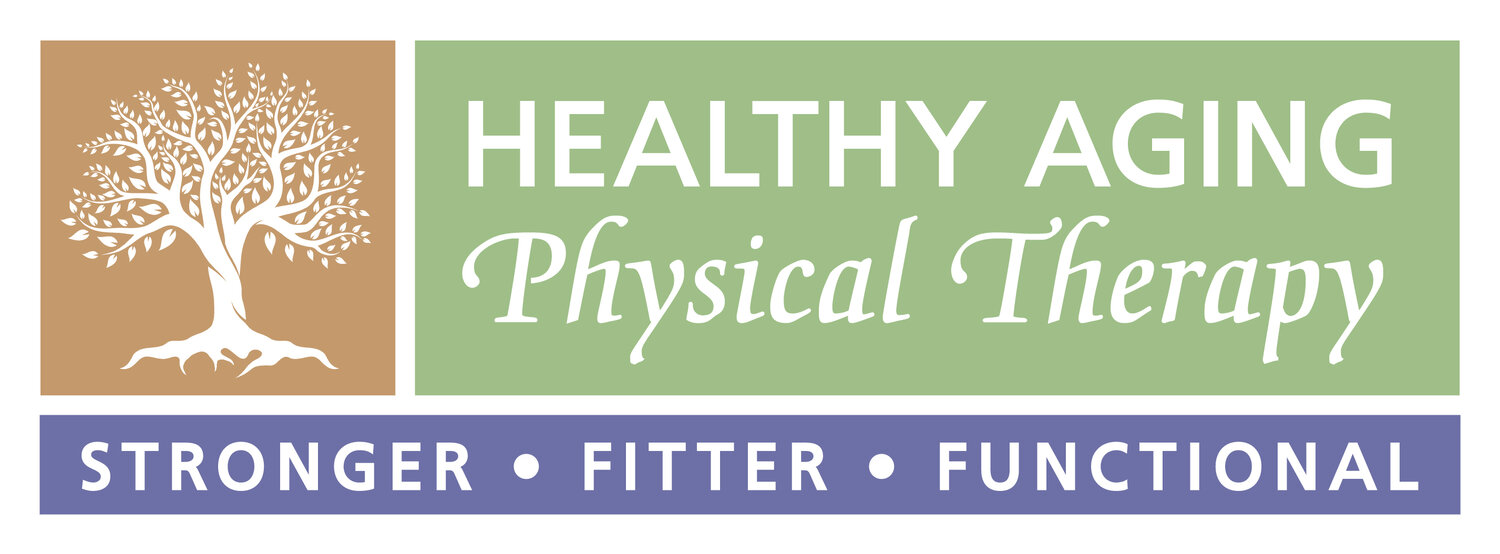


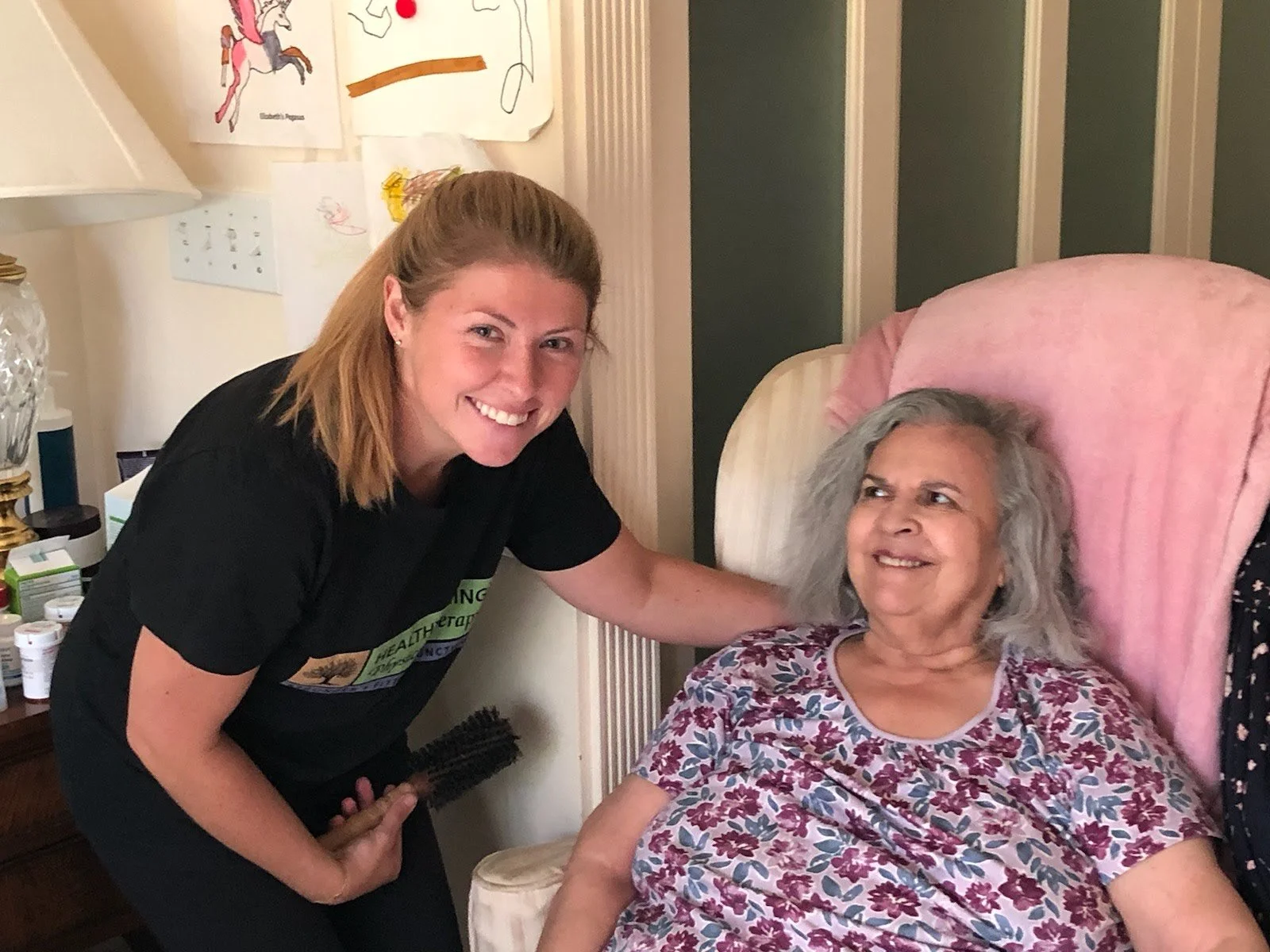


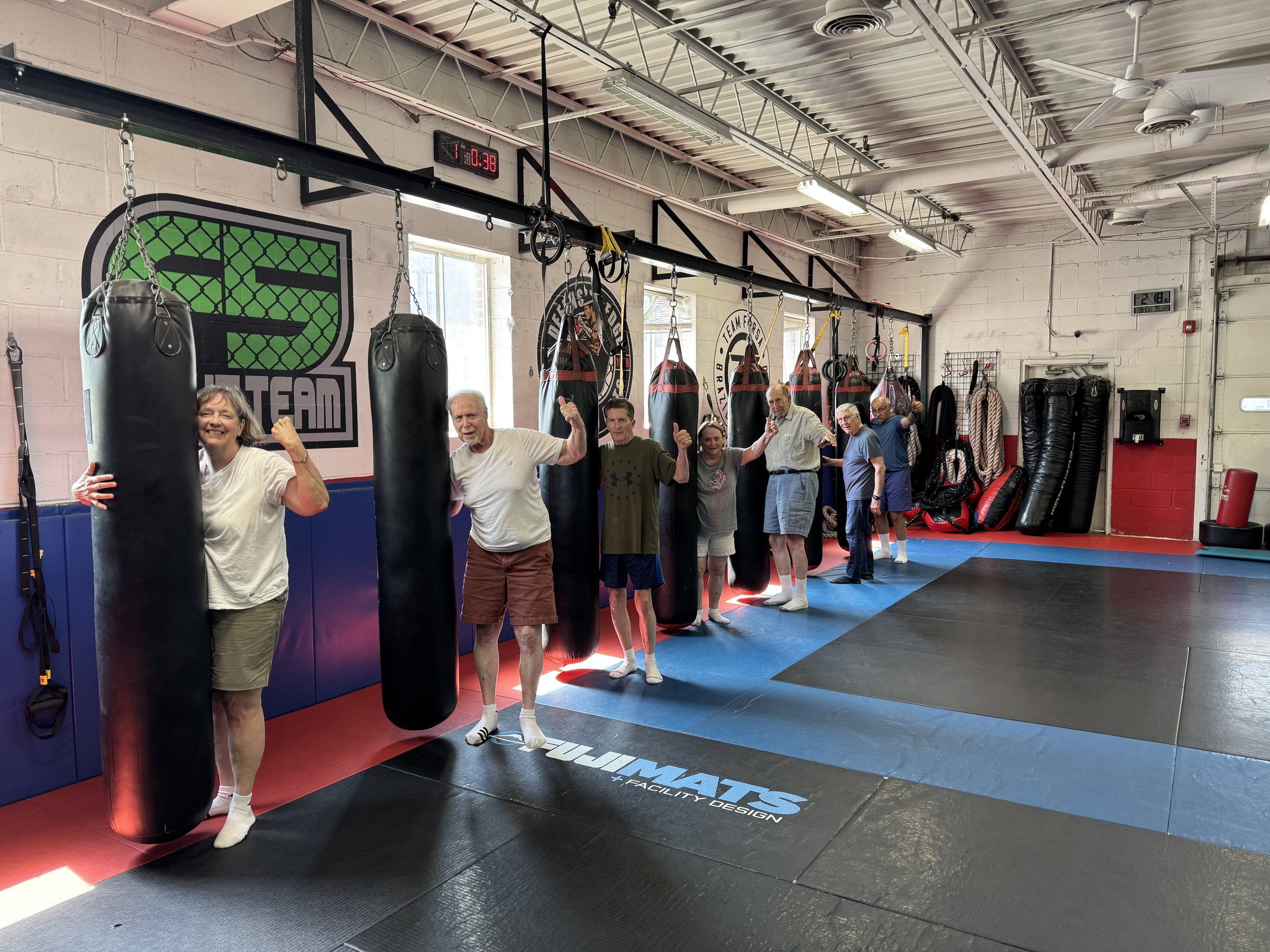











































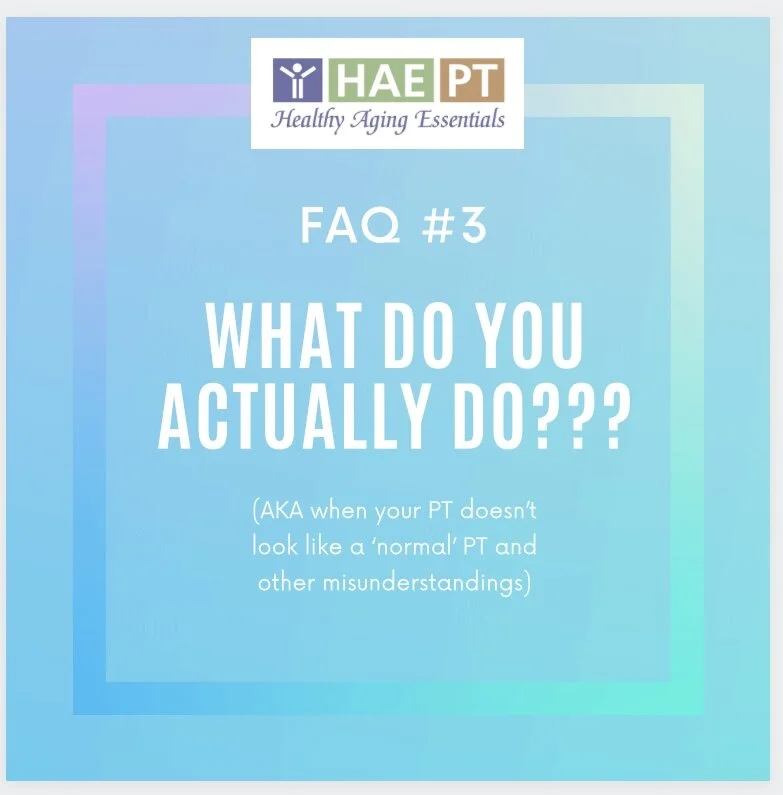
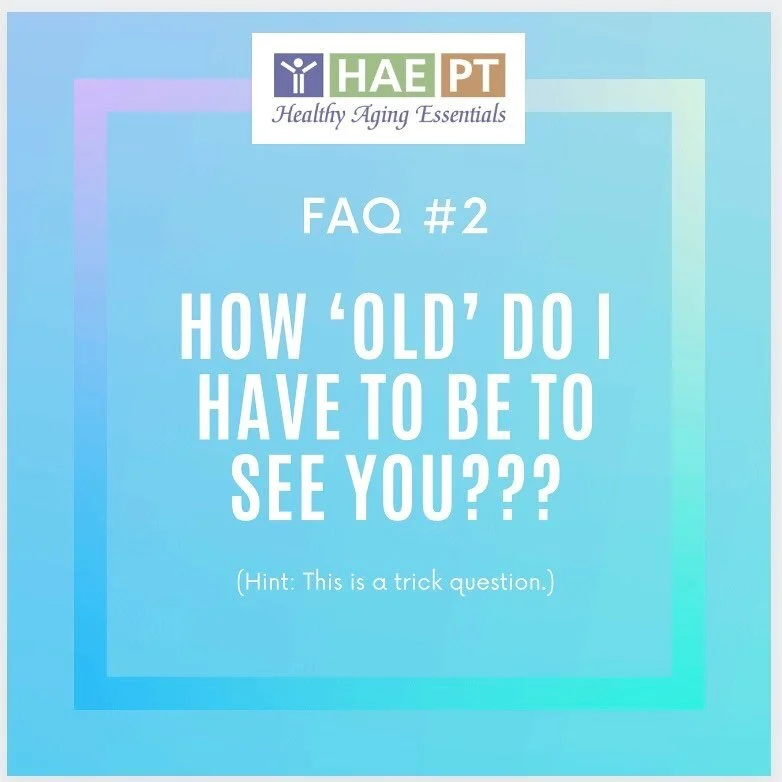




















Make this holiday season safer and more joyful for the older adults you love. In this post, Dr. Katie Wadland, PT, DPT, Board-Certified Geriatric Clinical Specialist and owner of Healthy Aging Physical Therapy, shares 10 practical tips, tricks, and affordable products to support aging in place—at home or while traveling. Learn how to manage energy, prevent falls, simplify travel, and choose smart gifts that promote safety, comfort, and independence.